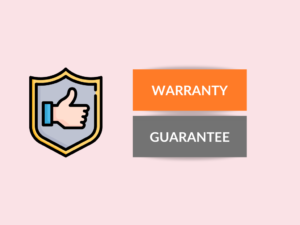Preowned vs. Refurbished: Understanding the Differences
When it comes to purchasing electronic devices or other items, you may have come across the terms “preowned” and “refurbished”. While these terms are often used interchangeably, they actually represent different conditions of products. In this article, we will explore the differences between preowned and refurbished, including their definitions, examples, and common uses. So, let’s dive in!
What is Preowned?
Preowned refers to items that have been previously owned and used by someone else. These items may have signs of wear and tear, but they are generally still in working condition. Preowned items can range from electronics like smartphones and laptops to furniture, clothing, and more. One of the key characteristics of preowned items is that they are sold in the same condition as when they were initially purchased.
Examples of Preowned Items:
1. A preowned iPhone with minor scratches on the screen
2. A preowned designer handbag with some wear on the straps
3. A preowned car with a few thousand miles on the odometer
Uses of Preowned Items:
– Preowned items can be a more affordable option for individuals who don’t mind a few cosmetic imperfections.
– It allows people to enjoy higher-end products that may have been out of their budget when buying new.
– Preowned items can also be a sustainable choice, as they extend the lifespan of products and reduce waste.
What is Refurbished?
Refurbished items, on the other hand, have undergone a process of restoration and repair to bring them back to a like-new condition. These items are thoroughly inspected, cleaned, and tested to ensure they meet the original manufacturer’s specifications. Refurbished items may have been returned by customers due to defects or other issues, or they may have been used for demonstration purposes.
Examples of Refurbished Items:
1. A refurbished laptop with upgraded components and a new operating system installation
2. A refurbished gaming console with a new controller and updated software
3. A refurbished vacuum cleaner with brand new brushes and filters
Uses of Refurbished Items:
– Refurbished items offer a more budget-friendly alternative to buying brand new, while still providing the same performance and functionality.
– It allows manufacturers to recycle and give a second life to products that might otherwise go to waste.
– Refurbished items often come with warranties or guarantees, providing peace of mind to buyers.
Differences Table:
| Difference Area | Preowned | Refurbished |
|---|---|---|
| Condition | Items are sold in the same condition as when initially purchased | Items have undergone a restoration process to attain like-new condition |
| Quality | Quality may vary depending on the wear and tear from previous use | Quality is ensured through a thorough inspection and repair process |
| Price | Generally less expensive than refurbished items | Slightly more expensive due to the refurbishment process |
| Warranty | May or may not come with a warranty depending on the seller | Often comes with a warranty or guarantee for added assurance |
| Availability | Preowned items are readily available in various conditions | Availability may be limited to specific models or discontinued products |
| Customization | Options for customization may be limited | Refurbished items may offer more options for customization |
| Accessories | May or may not include original accessories | Refurbished items often come with all required accessories |
| Testing | Testing may be minimal or not performed | Thoroughly tested to ensure optimal performance |
| Updates | May not have the latest software or firmware updates | Refurbished items often come with updated software and firmware |
| Appearance | May show signs of wear and tear | Refurbished items generally have a renewed appearance |
Conclusion:
In summary, the main difference between preowned and refurbished items lies in their condition and the processes they have undergone. Preowned items are sold as-is, while refurbished items have been restored and repaired to a like-new condition. The choice between preowned and refurbished ultimately depends on individual preferences, budget, and the desired level of quality.
Knowledge Check:
Test your knowledge about the differences between preowned and refurbished with these questions:
- True or False: Preowned items are always in worse condition than refurbished items.
- Which of the following is an example of a refurbished item?
a) A brand new smartphone
b) A used camera with scratches
c) A laptop that has been restored to like-new condition - What is the main advantage of purchasing preowned items?
a) Lower price
b) Higher quality
c) Longer warranty - Does every refurbished item come with a warranty?
a) Yes
b) No - Which one is more likely to have the latest software updates?
a) Preowned items
b) Refurbished items - True or False: Refurbished items are a sustainable choice.
- What additional benefit do refurbished items often come with?
a) Original packaging
b) All required accessories
c) Customization options - Which one of the following is not true?
a) Preowned items are readily available in various conditions
b) Refurbished items are generally more expensive than preowned items
c) Both preowned and refurbished items have undergone repair processes - True or False: Preowned and refurbished items can be electronics as well as furniture.
- What is the main difference between preowned and refurbished items?
a) Price
b) Warranty
c) Condition
Answers to the knowledge check:
- False
- c) A laptop that has been restored to like-new condition
- a) Lower price
- b) No
- b) Refurbished items
- True
- b) All required accessories
- c) Both preowned and refurbished items have undergone repair processes
- True
- c) Condition
Related Topics:
If you found this article helpful, you may be interested in exploring the following related topics:
- – Pros and Cons of Buying Preowned Items
- – How to Determine the Quality of Preowned Items
- – Tips for Buying Refurbished Electronics
- – Understanding Warranties for Refurbished Products



